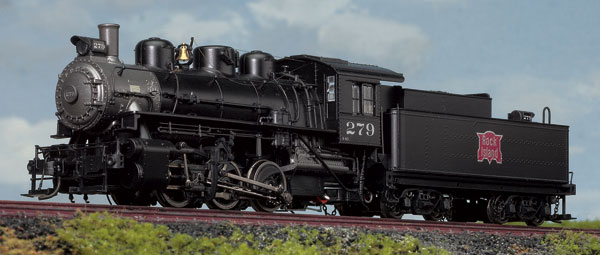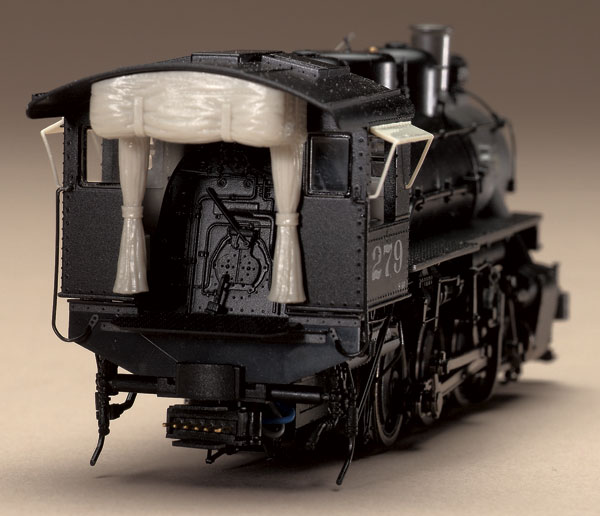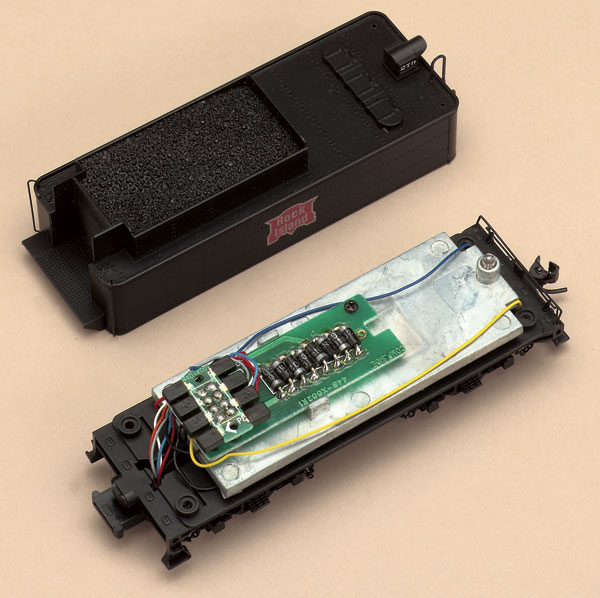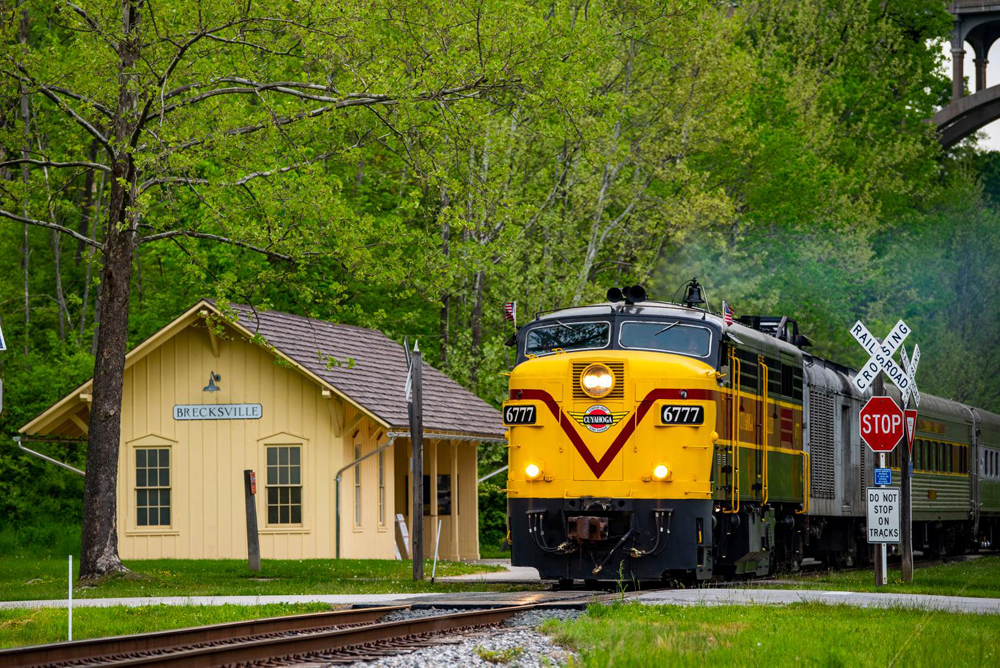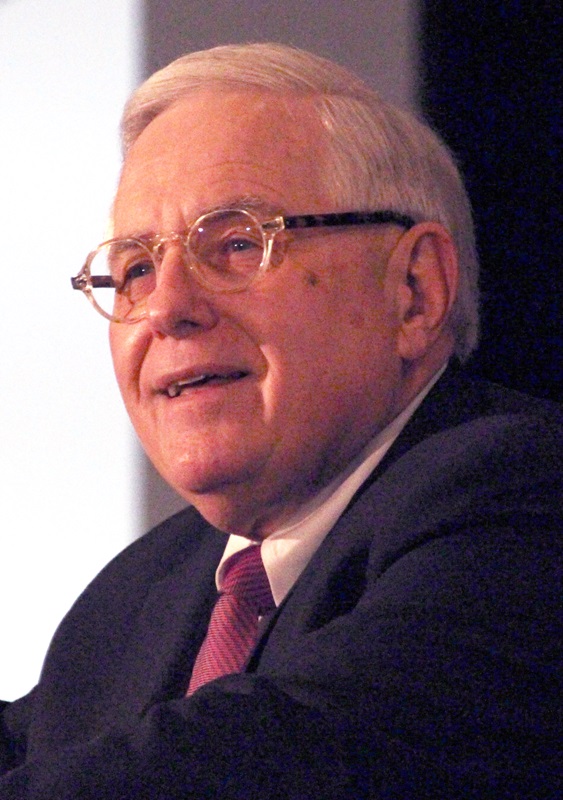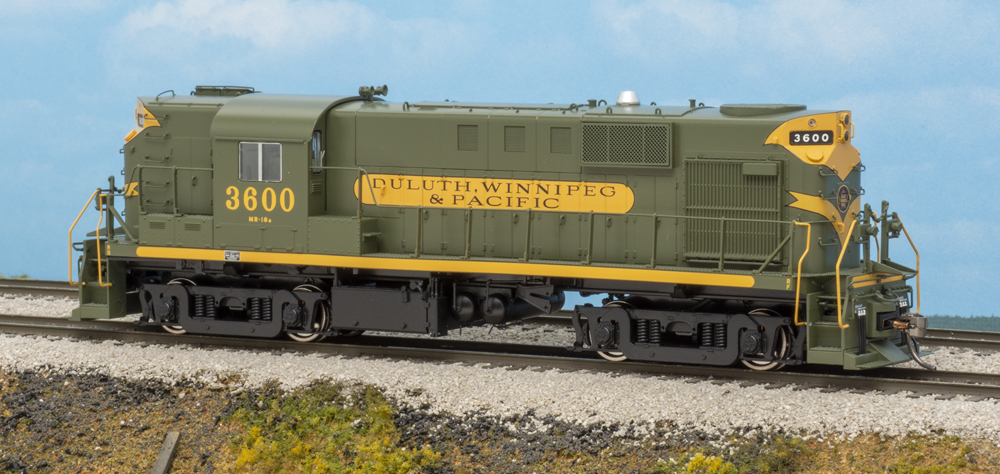The 0-6-0 was the smallest of the USRA locomotives built under government control of U. S. railroads during the First World War. A total of 255 were built in 1918 and 1919 for 22 different railroads. Seven roads, including five of the original recipients, ordered 101 copies of the standard 0-6-0, bringing the total constructed to 356. These 0-6-0s worked for roads in most parts of this country and remained in service into the 1950s.
Appearance
The third model in the Proto 2000 “Steam Heritage Collection” is a fine representation of its prototype. The locomotive is within an inch or two of all major dimensions in comparison to its prototype, as shown in drawing no. 12 in the Model Railroader Cyclopedia – Vol. 1: Steam Locomotives.
The tender can’t be judged by that drawing since it doesn’t represent the USRA 8,000-gallon design supplied with these engines. Many railroads modified or replaced the original tenders, and the model’s flat-topped tank and narrow fuel bunker are typical of a number of switch engine tenders. The high coal bunker shown is one of four options used to make the models closer to individual prototypes. The others are a similar high coal bunker but with a sloping rear sheet, a low-sided coal bunker, and an oil bunker.
(The locomotive’s ashpans are separate moldings attached to the bottom of the firebox, and presumably models representing oil-burning prototypes will be supplied without them.)
The sample shown here is lettered for the Chicago, Rock Island & Pacific, one of the series 275-284, road class S-39 (not “S 40” as lettered on the model’s cab), built by Alco’s Pittsburgh works in 1919 and not retired until 1953. Life-Like’s model is a good match for the Rock Island engines except for the headlight.
Three optional parts are included with the locomotive, a set of cab curtains for the rear of the cab and a pair of cab window awnings. All three are molded in gray plastic and would benefit from a little paint and weathering. The cab curtains can’t be used with the tender shown here, as they interfere with the front of the coal bunker.
There’s also a rectangular black plastic drilling jig made to slip into the cab window openings to locate the holes for the awnings, which you have to drill yourself with a no. 76 bit. The instructions make no mention of this jig or the need to drill these holes.
I also removed the sliding cab windows, which otherwise would have interfered with the installation of the awnings, by removing the cab from the boiler. To do this, pull the rear handrails out of the top holes and rotate them out of the way, then gently spread the bottom sides of the cab while sliding the cab up and to the rear. It’s not easy to do, and getting the cab back on with all the pipes, handrails, and valve control rods in place is even tougher. You’ll want to size these up carefully before you remove the cab.
Close inspection will give you a better appreciation of the engine’s excellent detailing, including lots of free-standing piping and conduits and a very complete boiler backhead. The side rods and valve gear are just as well done, and the eccentric cranks are correctly oriented on both sides.
Operation
The model has a can motor and flywheel concealed inside the boiler and driving the main driver through a gear train that comes down through the firebox. This arrangement keeps the electric drive completely hidden and leaves some realistic open air beneath the boiler. All wheels of the engine and tender pick up current, and this reliable contact makes the 0-6-0 not only a good runner but a steady one.
The engine’s starting voltage may seem high, but that’s caused by the directional constant-lighting diode circuit in the tender. The first 2.1 volts applied are absorbed in the diode drop, so the motor actually starts on about 1.5 volts. The top end is on the speedy side for a 51″-drivered switcher, but overall the engine is easy to control at realistic switching speeds. The drawbar pull is equivalent to 28 free-rolling freight cars on straight and level track.
Digital Command Control users will find the usual eight-pin DCC socket in the tender, and can discard the diode lighting circuit and plug in a decoder. The instructions also explain how to replace the model’s low-voltage bulbs with higher-rated lamps for decoder operation. (A bulb with stranded wire may be used to replace the headlight bulb by tinning the leads with solder so they can be inserted in the sockets.)
I tested the model with a North Coast Engineering D104KRS decoder on both EasyDCC and Lenz systems. The 0-6-0 performed even better under command control, starting to move on the first speed steps.
The wheels are all darkened metal with the National Model Railroad Association’s RP25 contour, and all matched the NMRA standards gauge.
Plastic magnetic knuckle couplers are installed on both the engine and tender. However, while the front coupler matches the Kadee no. 205 coupler height gauge, the rear coupler is about 1/32″ too low. I was able to correct the rear coupler height by substituting a Kadee no. 22 “overset” coupler (no. 32 would also work) and adding a Kadee no. 209 .010″ gray washer above each truck.
With the engine upside down in a padded cradle, remove the rear screw and the other three flathead Phillips screws. The cover plate can then be lifted straight up- if it sticks use a fine screwdriver blade to pry it away from the metal main frame. Life-Like recommends that you do not remove the drivers or rods.
Among my operating buddies I’m known as a guy who likes to work the yard. I mention that so you’ll appreciate the compliment when I say that the Proto 2000 USRA 0-6-0 is a locomotive I’d be glad to find on the yard lead.
Price: $265
Manufacturer:
Life-Like Products Inc.
1600 Union Ave.
Baltimore, MD 21211-1998
www.lifelikeproducts.com
Description:
Plastic and metal ready-to-run steam locomotive and tender
Features:
All-wheel electrical pickup
Digital Command Control (DCC) decoder socket in tender
Directional constant lighting
Drawbar pull: 1.9 ounces (26 cars)
Engine and tender weight: 9¾ ounces (engine alone weighs 6¾ ounces)
Minimum radius: 15″
Road names: (two numbers each)
Atlantic Coast Line
Chicago & North Western
Chicago, Rock Island & Pacific
Gulf, Mobile & Ohio
Maine Central RR
Pennsylvania RR
Unlettered





